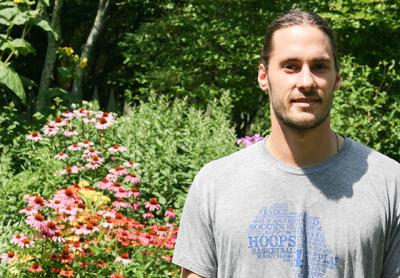Coding Could Be Key in Zimbabwe

Peter Kazickas of Amagansett, who plans to teach computer coding to Zimbabwean youth for 12 weeks this fall, an effort that he hopes will serve as a pilot for similar tutorial work in the developing world, has been devoted to Mark Crandall’s Hoops 4 Hope basketball-life skills mentoring curriculum for the past half-dozen years.
“The first time I went to Zimbabwe [he has gone twice since] was after high school, in 2011,” he said during a conversation at The Star the other day. “I was 17 then, and I’m going back to my favorite place in Zimbabwe, to Dzivarasekwa, where I spent that first night at a basketball court talking and laughing with six Hoops 4 Hope leader-coaches — a scared foreigner who was excited to be there. . . . I felt as if I’d known them all my life.”
After graduating two years ago from Hamilton College, where he played basketball and majored in world politics, Kazickas said he went to San Francisco to gain some knowledge of computer science and robotics, after which he began to teach computer coding in a small after-school program in New York City. He’s doing similar work here this summer, at the Ross School, Rosehip Partners, and at the Children’s Museum of the East End.
“The kids love it,” he said in answer to a question. “Basically, you’re teaching them how to build computer games, which they love. . . . Is it difficult? I had a 6-year-old in one of my classes. There are a lot of free programs on the internet that anyone can use in order to begin programming. You start with image-based coding — you take a block that says, ‘Move 10 steps . . . move right . . . move left. . . .’ You learn how to organize those blocks so that the computer will do what you want it to. Then you graduate to text-based coding, to writing the code behind the blocks.”
“We can teach kids how to make a simple game in a day,” he said, in reply to another question, “but getting a comprehensive understanding takes months of practice, which is why the curriculum we’re going to use with the Hoops 4 Hope community I mentioned in Zimbabwe is 12 weeks long.”
Schools there were beginning to have computers now, he said, “but there are so many kids. My best friend from high school, Eli Lubick, and I are planning to bring 20 computers with us. We’ve found a company that gives them to nonprofits or sells them at a discounted rate. . . . Our goal is to teach 60 to 80 kids in the 12 weeks we’re there, and to train four Hoops 4 Hope leaders who will be able to carry on the work after we’ve left. . . . The beauty of Hoops 4 Hope is that its programs are run by the people who live in the communities. Our goal is the same — to train their staff to lead it so we can disappear.”
He continued, “Our goal is that every kid will graduate having made their own website in which they’d have their portfolio — their biography, list their interests, and list all the computer games they’ve built and what they’ve learned through making them. . . .”
Computer coding helped to hone “problem-solving skills, perseverance, and mental toughness. Because you’re stuck a lot, you have to think out of the box, and not give up. But it’s so rewarding when you fix a bug, when you figure out why it isn’t working and how to make it work. So much comes from this type of learning.”
He and Lubick would target 15 to 18-year-olds, “kids on the fringe of graduating and looking to what’s going to happen next in their lives. If we can give them these skills, it will open up scholarship opportunities for them; it will help them with job applications, with internships, mentorships, with opportunities inside and outside of the country. . . . Perhaps they’ll be employed as Hoops 4 Hope teachers. The opportunities opened up to them will be far-reaching. Hopefully, our course will give these kids the skills to improve their lives.”
Answering another question, Kazickas said he would “definitely play and coach basketball” when there, and would help fill in potholes on H4H’s courts, as he has done every other year since first signing on to Crandall’s program six years ago.
Asked to define the goal he had for himself, he said, “My goal is to create a nonprofit that would partner with grassroots nonprofits in the developing world to teach computer coding and robotics. This is the pilot program for that. My goal and Hoops 4 Hope’s goals are the same, to help people help themselves.”
His summer classes are part of a fund-raising effort to help underwrite his and Lubick’s trip to and stay in Zimbabwe. Donated computers too would be welcomed, he said.
